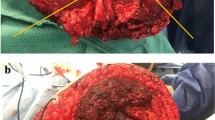Abstract
A lack of myoelectric sources after limb amputation is a critical challenge in the control of multifunctional motorized prostheses. To reconstruct myoelectric sources physiologically related to lost limbs, a newly proposed neural-function construction method, targeted muscle reinnervation (TMR), appears promising. Recent advances in the TMR technique suggest that TMR could provide additional motor command information for the control of multifunctional myoelectric prostheses. However, little is known about the nature of the physiological functional recovery of the reinnervated muscles. More understanding of the underlying mechanism of TMR could help us fine tune the technique to maximize its capability to achieve a much higher performance in the control of multifunctional prostheses. In this study, rats were used as an animal model for TMR surgery involving transferring a median nerve into the pectoralis major, which served as the target muscle. Intramuscular myoelectric signals reconstructed following TMR were recorded by implanted wire electrodes and analyzed to explore the nature of the neural-function reconstruction achieved by reinnervation of targeted muscles. Our results showed that the active myoelectric signal reconstructed in the targeted muscle was acquired one week after TMR surgery, and its amplitude gradually became stronger over time. These preliminary results from rats may serve as a basis for exploring the mechanism of neural-function reconstruction by the TMR technique in human subjects.
Similar content being viewed by others
References
Ajiboye, A.B., Weir, R.F., 2005. A heuristic fuzzy logic approach to EMG pattern recognition for multifunctional prosthesis control. IEEE Trans. Neur. Syst. Rehabil. Eng., 13(3):280–291. [doi:10.1109/TNSRE.2005.847357]
English, A.W., Chen, Y., Carp, J.S., et al., 2006. Recovery of electromyographic activity after transection and surgical repair of the rat sciatic nerve. J. Neurophysiol., 97(2): 1127–1134. [doi:10.1152/jn.01035.2006]
Hijjawi, J.B., Kuiken, T.A., Lipschutz, R.D., et al., 2006. Improved myoelectric prosthesis control accomplished using multiple nerve transfers. Plast. Reconstr. Surg., 118(7):1573–1578. [doi:10.1097/01.prs.0000242487.62487.fb]
Hu, X.L., Tong, K.Y., Song, R., et al., 2009. Quantitative evaluation of motor functional recovery process in chronic stroke patients during robot-assisted wrist training. J. Electromyogr. Kinesiol., 19(4):639–650. [doi:10.1016/j.jelekin.2008.04.002]
Huang, Y.H., Englehart, K.B., Hudgins, B., et al., 2005. A Gaussian mixture model based classification scheme for myoelectric control of powered upper limb prostheses. IEEE Trans. Biomed. Eng., 52(11):1801–1811. [doi:10.1109/TBME.2005.856295]
Hudgins, B., Parker, P., Scott, R.N., 1993. A new strategy for multifunction myoelectric control. IEEE Trans. Biomed. Eng., 40(1):82–94. [doi:10.1109/10.204774]
Kuiken, T.A., Dumanian, G.A., Lipschutz, R.D., et al., 2004. The use of targeted muscle reinnervation for improved myoelectric prosthesis control in a bilateral shoulder disarticulation amputee. Prosthet. Orthot. Int., 28(3):245–253.
Kuiken, T.A., Miller, L.A., Lipschutz, R.D., et al., 2007. Targeted reinnervation for enhanced prosthetic arm function in a woman with a proximal amputation: a case study. The Lancet, 369(9559):371–380. [doi:10.1016/S0140-6736 (07)60193-7]
Kuiken, T.A., Li, G.L., Lock, B.A., et al., 2009. Targeted muscle reinnervation for real-time myoelectric control of multifunction artificial arms. JAMA, 301(6):619–628. [doi:10.1001/jama.2009.116]
Li, G.L., Schultz, A.E., Kuiken, T.A., 2010. Quantifying pattern recognition-based myoelectric control of multifunctional transradial prostheses. IEEE Trans. Neur. Syst. Rehabil. Eng., 18(2):185–192. [doi:10.1109/TNSRE.2009.2039619]
Li, X., Zhou, P., Aruin, A.S., 2007. Teager-Kaiser energy operation of surface EMG improves muscle activity onset detection. Ann. Biomed. Eng., 35(9):1532–1538. [doi:10.1007/s10439-007-9320-z]
Miller, L.A., Stubblefield, K.A., Lipschutz, R.D., et al., 2008. Improved myoelectric prosthesis control using targeted reinnervation surgery: a case series. IEEE Trans. Neur. Syst. Rehabil. Eng., 16(1):46–50. [doi:10.1109/TNSRE.2007.911817]
Mummidisetty, C.K., 2009. Analysis of EMG During Clonus Using Wavelets. MS Thesis, University of Miami, Florida, USA.
Parker, P.A., Scott, R.N., 1986. Myoelectric control of prostheses. Crit. Rev. Biomed. Eng., 13(4):283–310.
Roy, R.R., Hutchison, D.L., Pierotti, D.J., et al., 1991. EMG patterns of rat ankle extensors and flexors during treadmill locomotion and swimming. J. Appl. Physiol., 70(6): 2522–2529.
Sabatier, M.J., To, B.N., Rose, S., et al., 2011. Chondroitinase ABC reduces time to muscle reinnervation and improves functional recovery after sciatic nerve transection in rats. J. Neurophysiol., 107(3):747–757. [doi:10.1152/jn.00887.2011]
Solnik, S., de Vita, P., Rider, P., et al., 2008. Teager-Kaiser operator improves the accuracy of EMG onset detection independent of signal-to-noise ratio. Acta Bioeng. Biomech., 10(2):65–68.
Staude, G., Flachenecker, C., Daumer, M., et al., 2001. Onset detection in surface electromyographic signals: a systematic comparison of methods. EURASIP J. Adv. Signal Process., 2001:867853. [doi:10.1155/S1110865701000191]
Stubblefield, K.A., Miller, L.A., Lipschutz, R.D., et al., 2009. Occupational therapy protocol for amputees with targeted muscle reinnervation. J. Rehabil. Res. Devel., 46(4):481–488. [doi:10.1682/JRRD.2008.10.0138]
Tysseling, V.M., Janes, L., Imhoff, R., et al., 2013. Design and evaluation of a chronic EMG multichannel detection system for long-term recordings of hindlimb muscles in behaving mice. J. Electromyogr. Kinesiol., 23(3):531–539. [doi:10.1016/j.jelekin.2012.11.014]
von Tscharner, V., 2000. Intensity analysis in time-frequency space of surface myoelectric signals by wavelets of specified resolution. J. Electromyogr. Kinesiol., 10(6): 433–445. [doi:10.1016/S1050-6411(00)00030-4]
Zhou, H., Wu, F.X., Yang, L., et al., 2013. A preliminary analysis of reconstructed nerve function using targeted muscle reinnervation in a rat model. 6th Int. IEEE/EMBS Conf. on Neural Engineering, p.1602–1605.
Zhou, P., Lowery, M.M., Englehart, K.B., et al., 2007. Decoding a new neural machine interface for control of artificial limbs. J. Neurophysiol., 98(5):2974–2982. [doi:10.1152/jn.00178.2007]
Author information
Authors and Affiliations
Corresponding author
Additional information
Project supported by the National Basic Research Program (973) of China (No. 2013CB329505), the National Natural Science Foundation of China (Nos. 61135004 and 61201114), the China Postdoctoral Science Foundation (No. 2013M541046), the Shenzhen Governmental Basic Research Grant (No. JCYJ20120617115010496), and the State Key Laboratory of Bioelectronics of Southeast University
Rights and permissions
About this article
Cite this article
Zhou, H., Yang, L., Wu, Fx. et al. Exploring the mechanism of neural-function reconstruction by reinnervated nerves in targeted muscles. J. Zhejiang Univ. - Sci. C 15, 813–820 (2014). https://doi.org/10.1631/jzus.C1400154
Received:
Revised:
Published:
Issue Date:
DOI: https://doi.org/10.1631/jzus.C1400154
Key words
- Neural function reconstruction
- Targeted muscle reinnervation
- Intramuscular myoelectric signal
- Myoelectric prostheses




